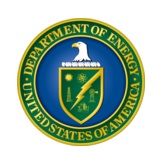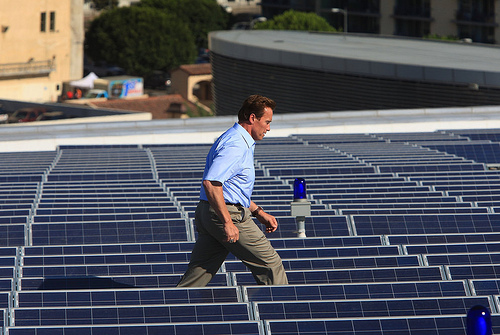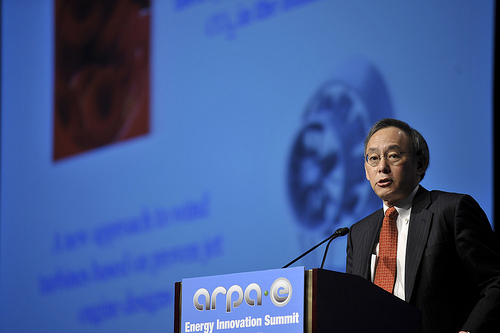 Today marked the last day of the U.S. Department of Energy’s Advanced Research Projects Agency (ARPA-E) 2011 summit in Washington D.C. Here are some of the deals and agency decisions revealed or discussed at the summit, which are likely to impact green tech investors and startups in America for years to come.
Today marked the last day of the U.S. Department of Energy’s Advanced Research Projects Agency (ARPA-E) 2011 summit in Washington D.C. Here are some of the deals and agency decisions revealed or discussed at the summit, which are likely to impact green tech investors and startups in America for years to come.
Progress on seed investments…
The D.O.E. boasted that six, private companies that it seed-funded last year have raised a collective $100 million in additional private capital. Five of those companies are based in Massachusetts, and one in California, respectively:
-
1366 Technologies – manufacturing technology providers that help silicon photovoltaics manufacturers cut their costs and therefore the overall cost of installed solar power.
FloDesign – a company that uses aerospace technology to develop everything from wind turbines, and noise reducers to, yes, weapons and stealth aircraft.
SunCatalytix – an energy storage and renewable fuels company that’s working on a way of generating solar power from light and water.
General Compression – compressed air energy storage technology that makes intermittent renewable power, primarily from wind farms, more useful at a large-scale.
24M Technologies – a spin-out from A123 Systems that’s making lithium-ion electric car batteries that store more energy for a lower price compared to what’s available today.
Envia Systems – a developer of lithium-ion batteries made of a proprietary, composite cathode material that, ARPA-E reports, have the highest energy density in the world.

Climate changing attitudes…
Leaders in energy and clean tech — including from the private sector and Obama administration — spoke on a range of subjects at the summit, including ARPA-E budget cuts, spending what’s left and where, and changing attitudes about clean energy and climate change.
The list of speakers included Energy Secretary Steven Chu, the U.S. Navy Secretary Ray Mabus, and former California governor Arnold Schwarzenegger along with 85 others. [Ed’s note: Why couldn’t ARPA-E find any African-Americans to speak at this summit? Check out the not so diverse speaker list in full, and let us know who you would have recommended for a more equal opportunity event in the comments below.]
As Jenny Mandel reported for Greenwire’s Environment & Energy, the “Gov” said it was time to end debates over climate change, face the music of global warming, and stop acting defeatist about America’s chances to lead clean energy and green tech industries on the world economic stage.

Tightening the purse strings…
Secretary Chu remained optimistic about ARPA-E’s impact thus far and potential to drive further positive developments in clean energy at home, hedging questions about the agency’s budget for 2011.
As Eli Kintisch reported on the fate of the agency’s budget for Science Insider, earlier this week:
“The young agency [ARPA-E]… is living off $15 million it received in 2009 after having committed some $400 million in stimulus funding. Without more money, the program will have to start cutting staff members or other expenses this summer…
The White House request[ed] $550 million for ARPA-E in 2012, [but] Congress had authorized only $306 million for the agency in last year’s reauthorization of the America COMPETES Act. Even $50 million for the rest of the fiscal year would put a squeeze on the agency. ARPA-E might stay alive, but it would be a shell of the juggernaut that attracted 2000 people to the [summit event].”
Storing power, greening the military…
From what’s left to spend, U.S. Navy secretary Mabus revealed at the event, the Department of Defense and the Department of Energy were striking a partnership to green the military’s energy use with more powerful, portable fuel cell, battery and smart grid technology. [Hat tip: Green Car Congress]
Through the agreement, the Navy would start to use grid, and power storage systems developed by ARPA-E in its operations. The DOD and DOE plan to spend some $25 million, starting next year (2012) to develop two particular projects, here.
One thing they will support is the development of a hybrid power storage system that’s got enough energy density to charge military equipment in the field, but is portable, and can therefore help reduce diesel consumption, as well as time spent refueling in the field.
Another thing they will support is research into power storage and grid systems that can help the Navy ensure power is always-available at all their buildings, regardless of high gas prices and decreasing budgets, political unrest in oil-producing nations, or the intermittent qualities of renewable energy sources like wind and solar.
Photos:
-
1. Arnold Schwarzenegger touring a solar photovoltaics plant, Nov. 2009 via Jumanji Solar
2. Energy secretary Steven Chu at ARPA-E Energy Innovation Summit 2011, Washington, DC by Ken Shipp via via US.gov